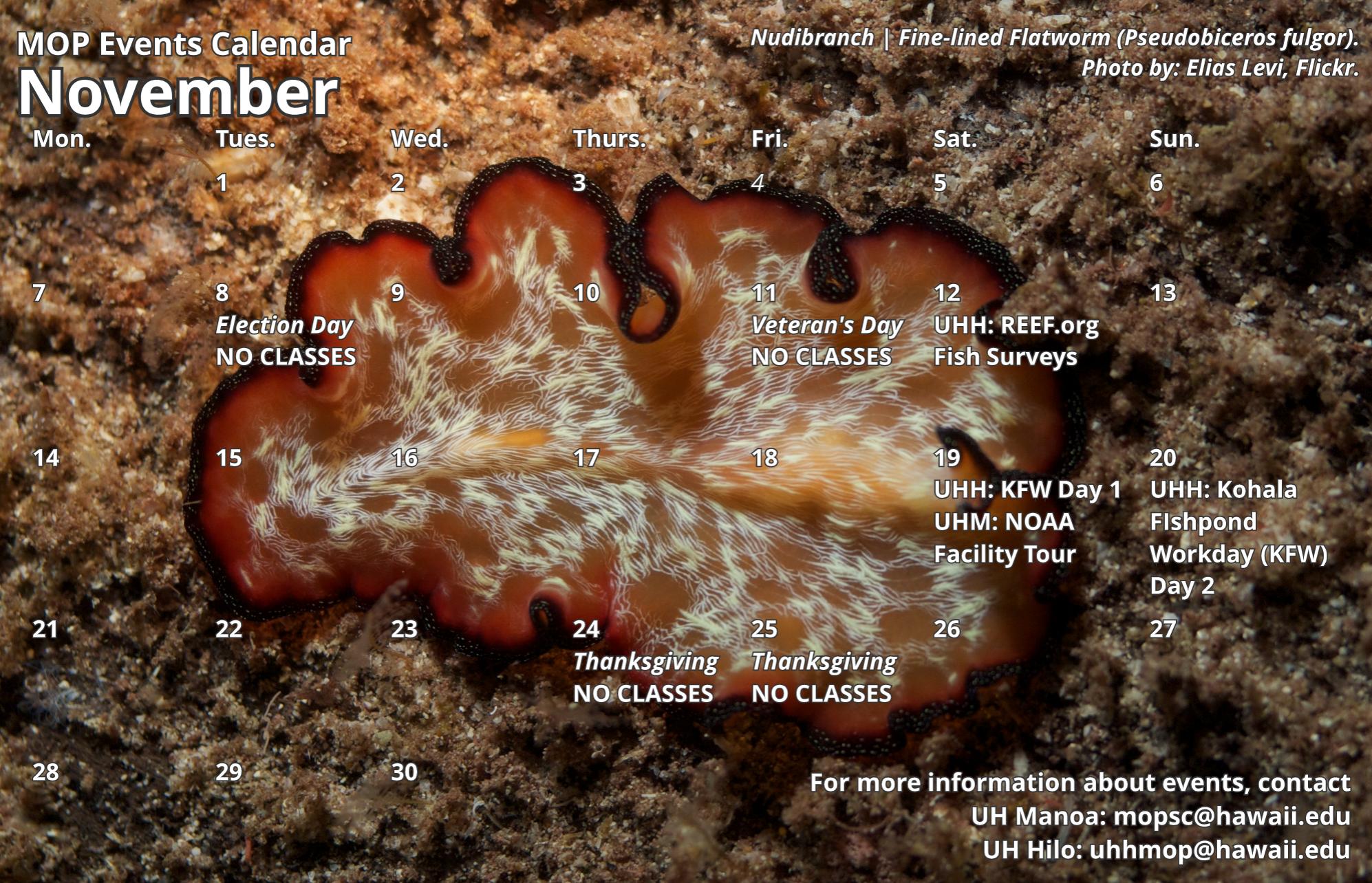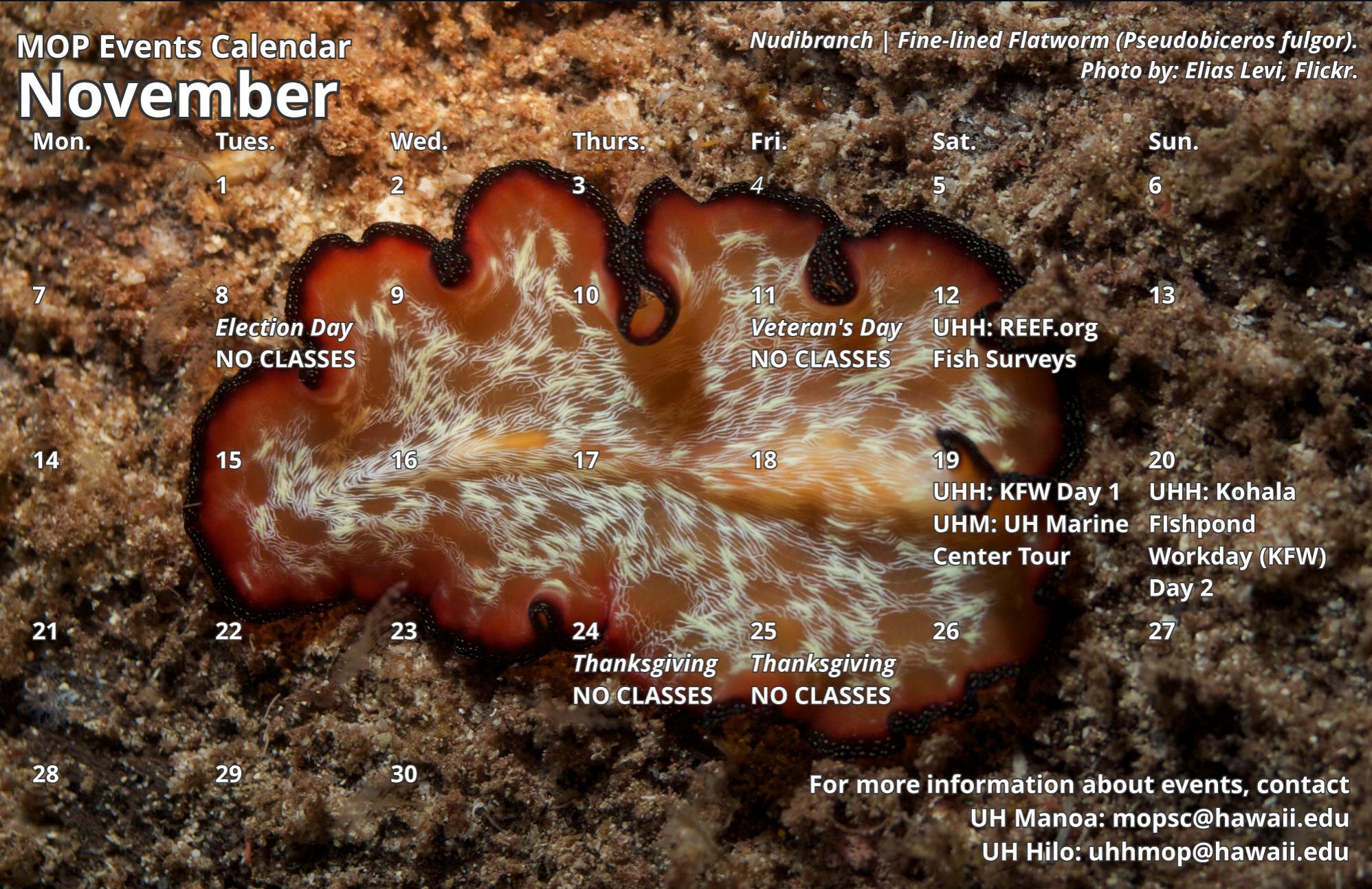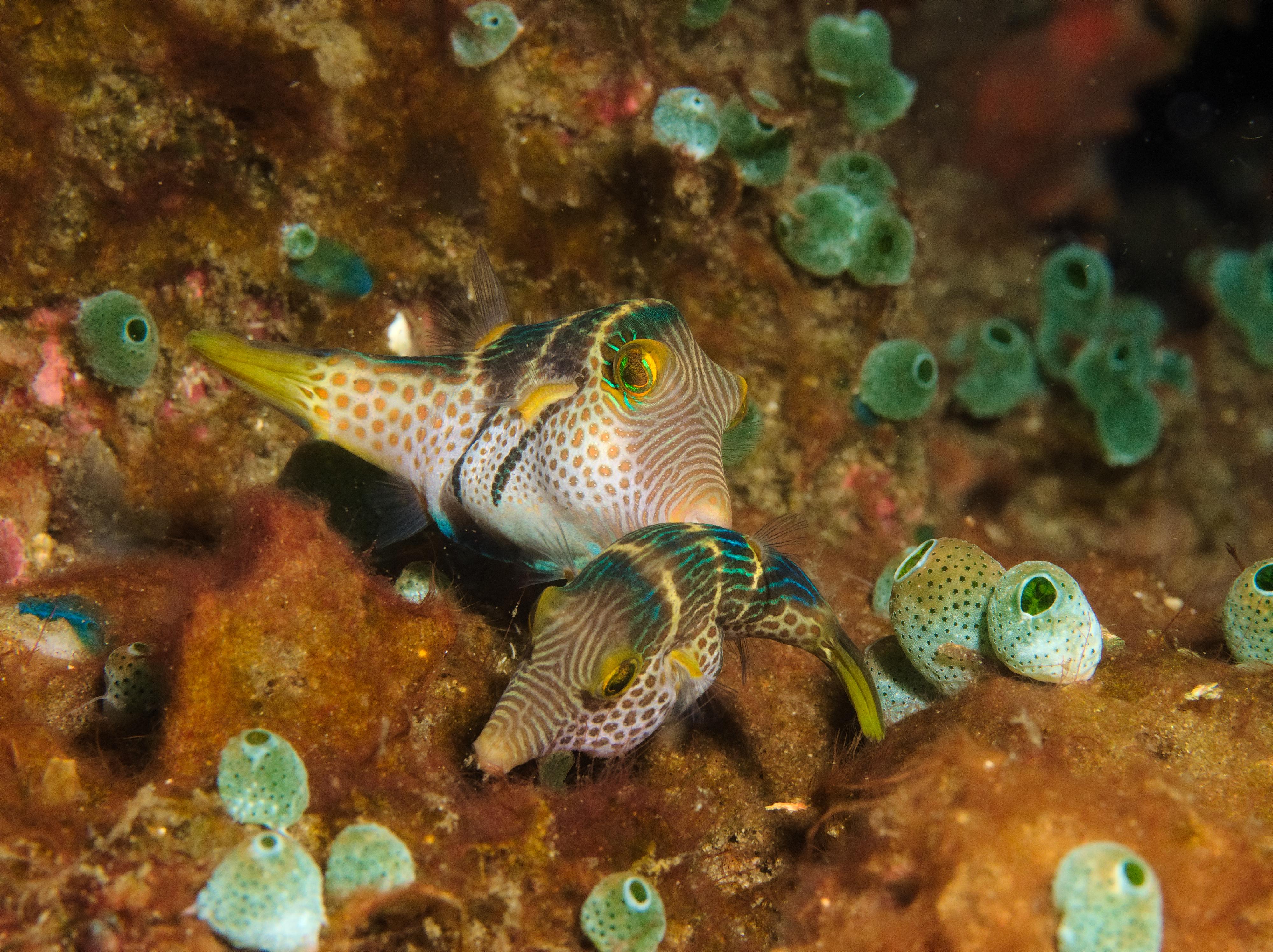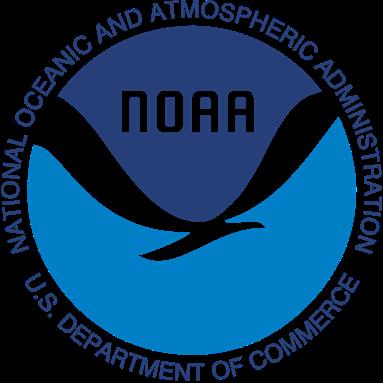SEAWORDS









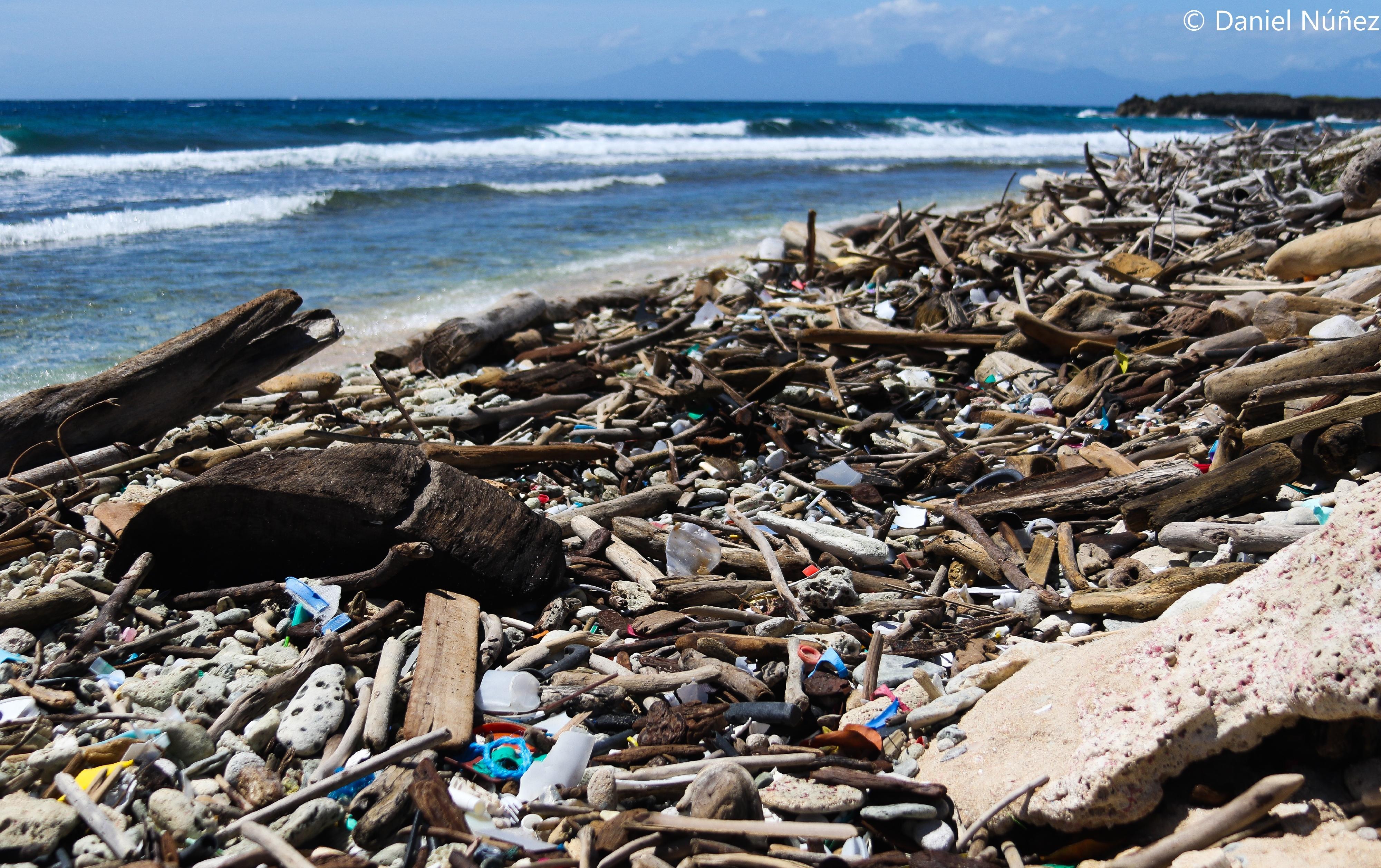 By: Hal ey Chasin, UHM MOP Al umna
By: Hal ey Chasin, UHM MOP Al umna
Approximately 24 to 35 million metric tons (Mt) of plastics enter oceans, rivers, and lakes annually, contributing to the estimated 5 trillion pieces of plastic currently in the ocean. This amounts to a large scale problem and something that needs to be addressed. Solutions include reducing waste, improving waste management, and cleaning up the ocean and other waterways. Plastics do their job in that they are hard to

degrade. The weight loss of plastic is less than 1%a year; the most common plastic, polyethylene, could take up to a century to go away.
The most common types of plastics found in the ocean are High-Density Polyethylenes (HDPE) these include fishing equipment, ghost nets, bottle caps, toothbrushes, detergent bottles, shampoo, conditioner, shower gel bottles, beverage bottles, crates, pieces of buckets and toys.

A smaller percentage of Low-Density Polyethylenes (LDPE) and PP(Polypropylene) exist in the ocean. The densities of these plastics are lower than water which makes them float more easily and stay in the ocean longer. Some plastics do not stay in the ocean but wash up onto shore or sink close to the coast. These plastics include plastic bags, cigarette filters, PETbottles, styrofoam food and beverage containers, straws, and textiles. Right now, 5-10%of the plastics in the ocean are microplastics, small particulate plastic less than 5 mm in diameter.
The plastics that go into the ocean accumulate in currents known as gyres. The plastics will continue to circulate until they break down into smaller pieces eventually becoming microplastics, making them harder to clean up and easier for animals to ingest. The accumulation of plastics becomes
ocean garbage patches; the largest one is the Great Pacific Garbage Patch (GPGP), located between Hawaii and California. The Ocean Cleanup crew devised a plan.
On October 20th they launched System 002, ?Jenny,?a system that will collect garbage in the ocean without causing harm to the ecosystem. It works by creating a circulating current in the garbage patch that moves plastic around, creating changing hotspots where the system cleanup occurs. The net is wide enough to collect plastic but also narrow enough to allow fish to escape. It maintains a current speed and catches the plastic in the retention zone by correcting its wingspan, speed, and direction.
Once the system is full, the plastic goes onboard to be sorted and is later used to make sunglasses. The system is designed to capture plastics of both small and large size, including ghost nets. Since its deployment in
August 2021, the Ocean Cleanup crew has collected 101,353 kg of plastic over 45 extractions in an area of 3,000 km squared, the size of Rhode Island. Their goal is to start at rivers to make sure that more plastics do not enter the oceans while other clean-up projects are occurring in the open ocean.

Humans use multitasking daily to solve problems related to
eradicating disease, climate change, reducing poverty, and improving education so clearly, we should be able to do the same thing with plastic. To help this company and their mission you can volunteer and do your part to refuse, reuse, reduce and recycle plastics. Additionally, beach cleanups and cleaning up around your local community can be beneficial for both the environment and the community.
Haley Chasin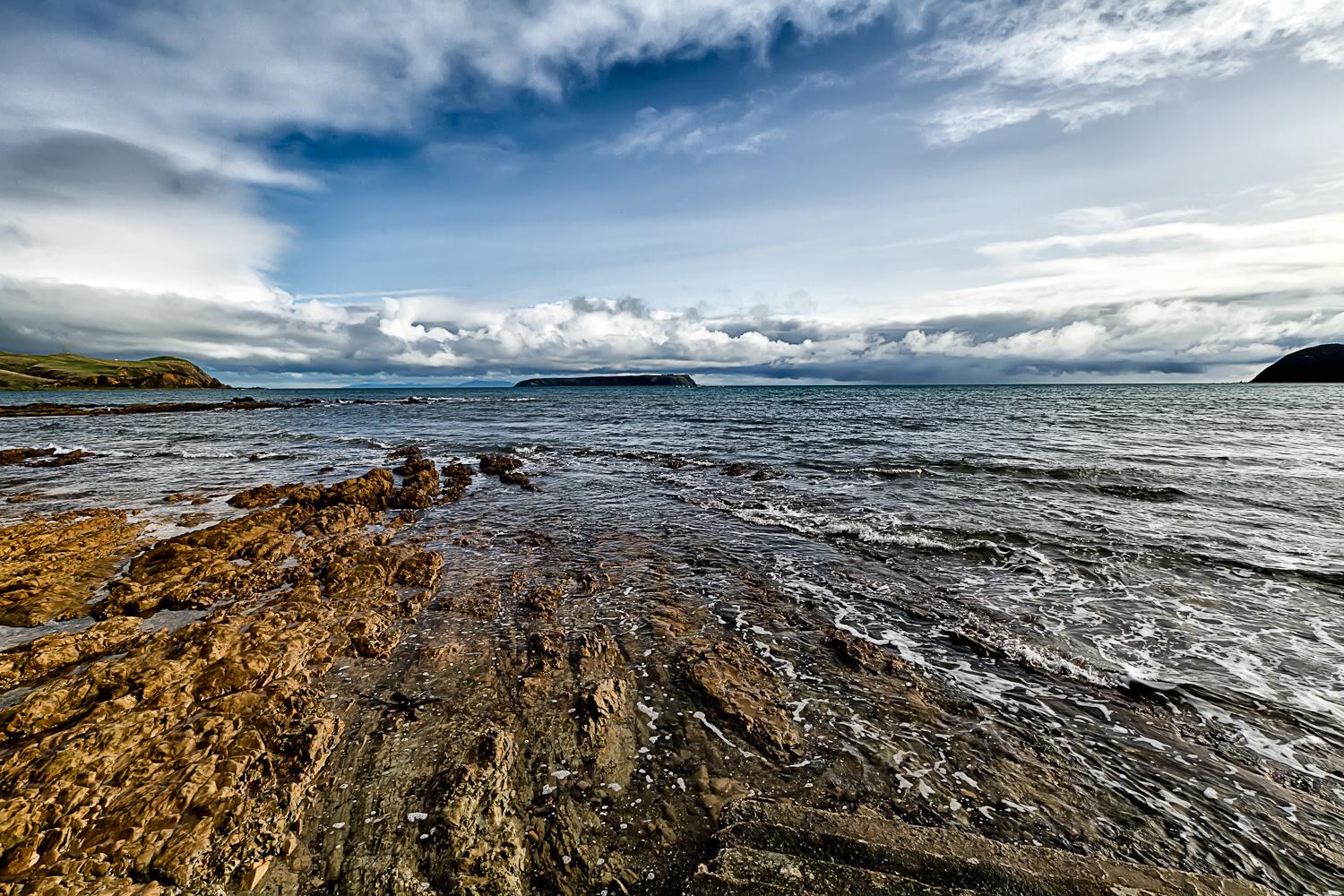
M ost of the hum an population along the Pacific Rim has experienced earthquakes. Earthquakes can be caused by tectonic plates m oving in opposite directions along a fault line, subduction zone m ovem ent, or volcanic activity. Researchers from Te H aranga Waka Victoria University of Wellington, New Zealand have been exam ining the H ikurangi Subduction Zone, where the Pacific plate subducts (dives) under the Australian plate. This zone runs along the east coast of the North Island in New Zealand. This subduction zone can create m egathrust earthquakes at an 8 on the Richter scale. Given the m agnitude of these earthquakes, it is im portant to study this subduction zone. Yet despite the size of the earthquakes, it has not been studied thoroughly and it can pose challenges to exam ine. Studying the H ikurangi subduction zone is an im portant key to predicting upcom ing earthquakes. Researchers from Te Herenga Waka have found
interesting evidence that could be affecting the m agnitude of these earthquakes. Off the Rocky Bluffs along the Hungaroa Fault, not far from and created as a result of the H ikurangi Subduction Zone, Dr Carolyn Boultan and her team of researchers found large am ounts of calcite sam ples. Calcite is a com m on m ineral that com es from ancient single celled organism s such as plankton, algae, and sponges. These calcite sam ples were left by ancient m arine organism s that perished m illions of years ago So, what do rem nants of ancient plankton have to do with earthquakes in New Zealand? According to Dr. Carolyn


Boultan, ?calcite dissolves faster when it?s highly stressed and when tem peratures are cooler.? She adds, ?it dissolves m ore easily at low tem peratures ? say, room tem perature. But it gets harder to dissolve as tem perature goes up ? say, deeper in the Earth. In the subduction zone, tem perature increases m ore slowly than on land ? by only around 10 ºC (18 °F) per km . So the fault is really sensitive to what calcite, those shells of old dead m arine organism s, is doing. The am ount and behavior of calcite from these organism s is a big piece of the puzzle of how large the next earthquake m ight be.?This m eans that when calcite dissolves it can act as a lubricant for the subducting plate,
allowing easy subduction. If it does not dissolve it can build up at the faults causing pressure to build thus a large am ount of energy is released when an earthquake occurs. The research team is still finding out what calcite's effects are on subduction zones if they can lead to extrem e earthquakes. The H ikurangi Subduction Zone still has m any secrets that need to be uncovered to effectively predict and brace New Zealand to coexist with these large earthquakes. W ithout large scale drilling equipm ent, it is hard to give a solid answer. Dr. Boulton added ?W hat we really want to know is: Are there slow slip events out there we haven? t detected?Are the rocks m oving without earthquakes, or are they truly locked up?That will help tell us what m ight happen in the next earthquake.?This could lead researchers at high-risk earthquake areas to also exam ine if large am ounts of calcite could be found. M ore research is needed, but it is an interesting turn of events for seism ology.

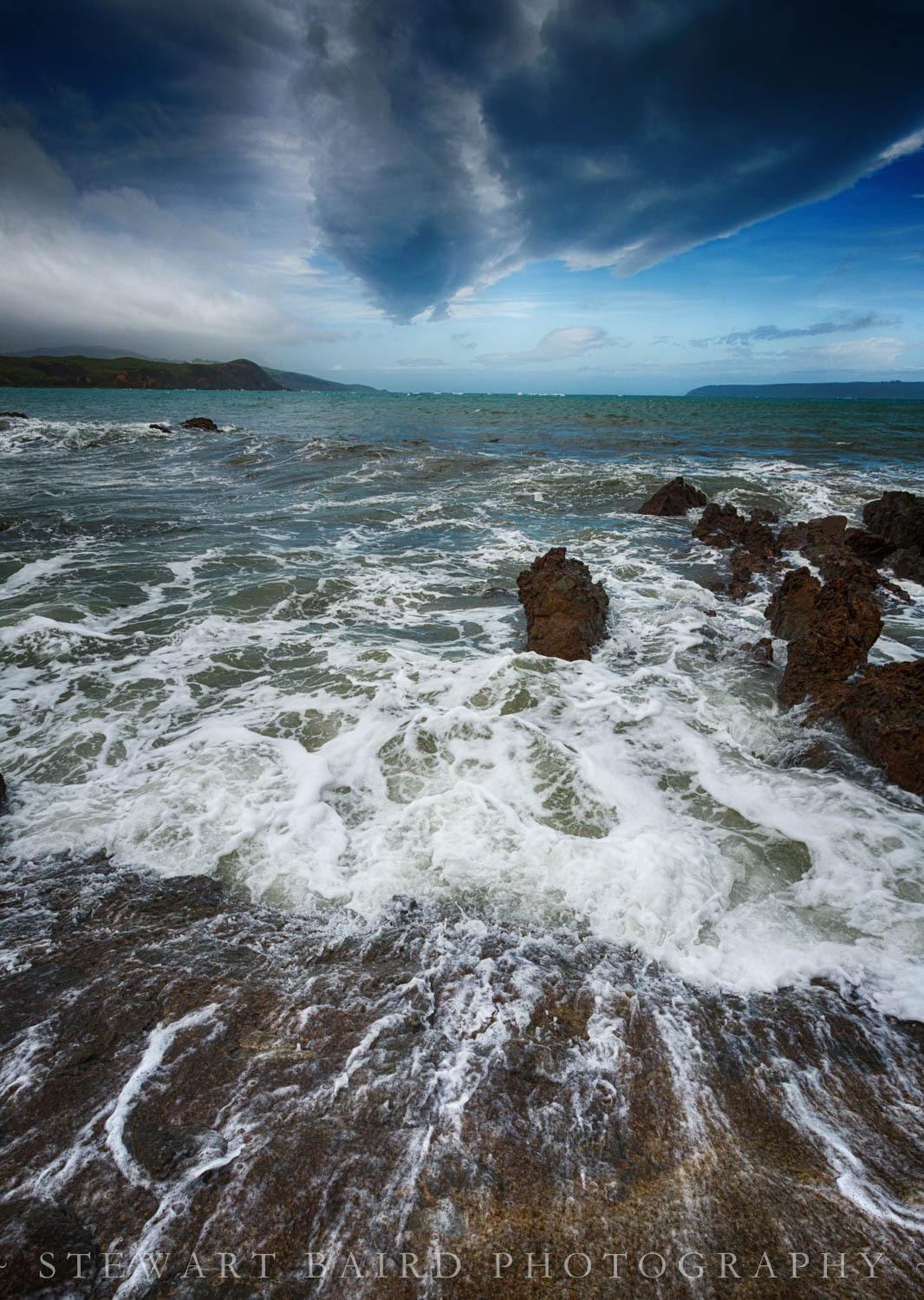

Moreand morefrequently weareobserving and experiencing theeffects of anthropogenic climatechange. Oneof thelargest contributors to this crisis is themassive amounts of carbon dioxide emissions.
Theocean is an important buffer theearth has against CO2 emissions. Each year theoceans absorb up to onethird of the
excess carbon in theatmosphere through biotic and abiotic mechanisms. From 1994-2007,34 billion metric tons of carbon was absorbed by the ocean globally. This is four times theannual amount compared to theperiod 1800-1994.
Oneway theocean absorbs carbon is through theprocess of ocean mixing, which is largely driven by temperature. Colder
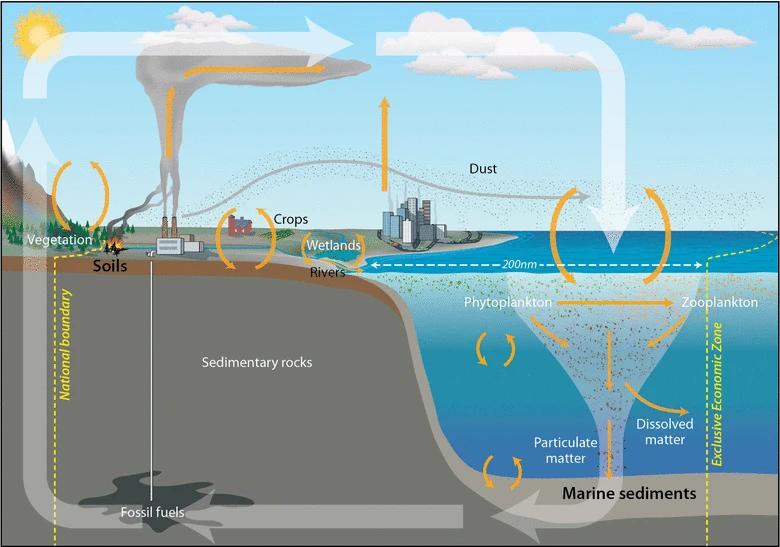
water is heavier than warmer water and sinks, creating a vertical redistribution of properties including nutrients, salinity, and gas. A portion of atmospheric carbon is directly absorbed by theocean?s surfaceand enters theocean mixing pathway. Thecarbon sinks with thecooler water and makes its way to thedeep sea whereit can remain sequestered for thousands of years. Another way carbon is sequestered by theocean is through thefood chain. The process known as diel vertical migration (DVM) happens when many twilight zone dwelling organisms head to the surfaceeach night to feed. Phytoplankton at thesurface carry out photosynthesis, taking in carbon and releasing oxygen. Carbon enters the food chain when the phytoplankton areconsumed. After a night of feeding,
twilight zoneresidents head back down to deeper waters. Their wasteand eventually their bodies will sink to thebottom of theocean wherethey becomea part of ocean sediment and thecarbon within them is stored in a more permanent way. Thetimescale of geologically stored carbon can last for thousands of years. However, it is still not clear as to how much atmospheric CO2 makes it to deep sea ocean sediment and how much remains circulating in theocean. Additionally, thereis thepossibility the ocean?s effectiveness at absorbing atmospheric CO2 is decreasing dueto anthropogenic changes in greenhousegas emissions and theresulting climatechange. Onestudy compared climate model simulations to models that considered ocean-specific changes between theyears 1960 and 2005.
Theanalysis of themodels found that low latituderegions, wherewaters arewarmer, haveexperienced a reduction in carbon uptakecapabilities attributed to anthropogenic climatechange. This is due, most likely, to changes in sea surfacetemperaturethat affect carbon?s solubility and stratification. Moregas can be dissolved in a colder liquid compared to a warmer one. At higher latituderegions, no significant changes in ocean carbon uptakewerefound. Theseresults can beattributed
to themassiveinternal variability of theocean.
Overall, thestudy concluded that global ocean carbon uptake has not yet been affected by climatechange, but noted that most availabledata on ocean carbon cycles comefrom high latituderegions whereit can be harder to detect theimpacts of climatechange. They highlighted theneed to expand the observations of climate-carbon feedback loops in low-latitude oceans to get a better senseof how weareimpacting ocean carbon uptake.
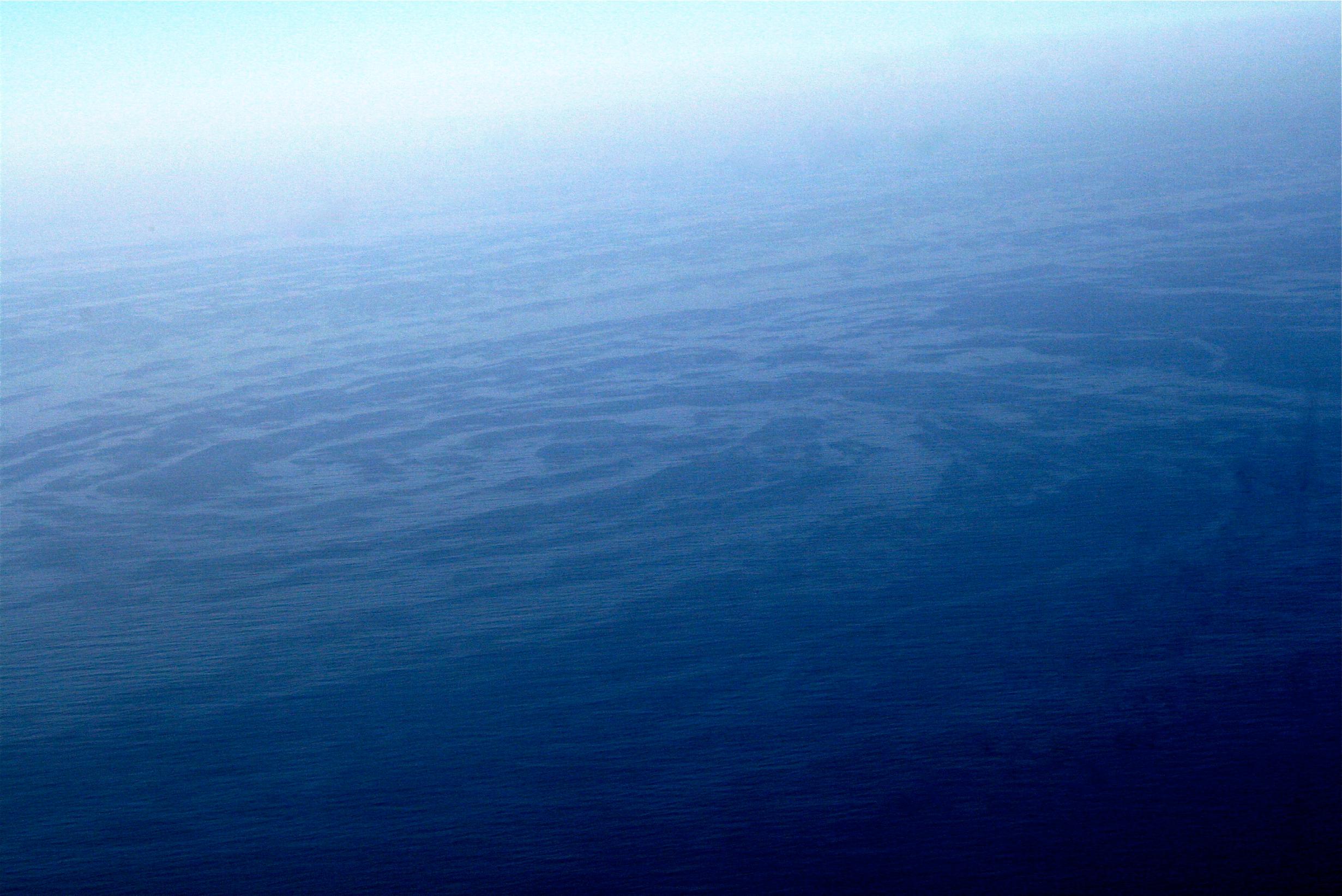
 By:AlexandryaRobin
By:AlexandryaRobin

A fascinating crab with som e interesting features is Lybia edmondsoni, better known as the H awaiian pom -pom crab, the boxer crab, or k?m im i pua. The pom -pom crab gets its nam e from its m utualistic relationship with sea anem ones. The crab carries an anem one in each of its chelae. M ost often these anem ones are Triactis producta, which are venom ous and great for defense. However, the anem ones are not only used for defense! The pom -pom crab doesn? t have very strong claws for capturing prey, so the anem ones are used to collect food particles as well. The anem ones are able to asexually reproduce, m eaning the pom -pom crab can survive with just one anem one until it buds, creating another anem one.
W hen the pom -pom crab m olts, it transfers the anem ones to its new shell. Research showed that for m ost of the studied pom -pom crabs, the original anem ones that the pom -pom crabs picked up stayed with them throughout their life.
The pom -pom crab is also known as the boxer crab for a reason- they are aggressive in nature especially towards those of their own species, and do not willingly exchange anem ones even if they bud. The im portance of the anem ones, even when lost during aggressive behaviors, is shown by the pom -pom crabs fragm enting the original anem one to speed up the duplication process so that there is always one anem one per chelae.
Although this interaction was observed in a lab setting, researchers also explored the
Pom-pom
DNA of the wild-caught pom pom crab?s anem ones. The data showed that m ost crabs had anem ones that were identical copies of each other. This indicates that this stealing behavior is com m on in the wild. Additionally, the fragm enting behavior is the only known exam ple of a species inducing asexual reproduction in another species.
Pom -pom crabs are fascinating crustaceans, but m uch rem ains to be discovered. For exam ple, the m utualistic anem ones have not been observed to be living and growing on their own. How do the crabs acquire the anem ones?How did this unique relationship evolve?These unknowns only m ake them m ore interesting!

 By: Chloe Molou, UHH Seawords Liason
By: Chloe Molou, UHH Seawords Liason
North of the island of Tongatapu in the kingdom of Tonga,the submarine volcano Hunga Tonga-Hunga Ha?apai (HTHH) violently erupted on the morning of January 15th,2022,sending a plume of hot ash 58 km into the atmosphere.
HTHH had shown intermittent activity for weeks,with its initial detection on December 20th, 2021,and eventually caused the largest submarine eruption since 1883.
On land,the tsunami and ash deposits that followed furthered the destruction and shock of the initial eruption. In the ocean,the eruption and associated ash plume had a very interesting impact on the seawater surrounding the island.
 PhytoplanktonBloom inthe Bayof Biscay.
PhytoplanktonBloom inthe Bayof Biscay.
Only two days following the eruption,came the formation of a massive phytoplankton bloom ? 40 times the size of the island of O?ahu. Tonga?s surrounding waters normally display low levels of phytoplankton as they are carried away by ocean currents. This means this environment could benefit greatly from a large phytoplankton bloom. Chlorophyll a concentrations were found to have increased tenfold in the days following the main eruption;this trend has been observed previously in much smaller scales,following eruptive activity in 2015 and 2017. A decrease in the chlorophyll a concentration began on January 17th and
did not reach typical values until January 27th;again,a similar trend to what was observed in 2015 and 2017.
The great eruption of HTHH caused a large disturbance to a vast oligotrophic ecosystem, transporting nutrients through ash fallout and supporting primary production in the surface waters. The nutrient flux and increase in phytoplankton biomass in this region could mean a great number of things for the organisms in this ecosystem. However,as it has been previously observed,researchers are wary that the nutrient flux will lead to a phosphorus limitation,threatening the nutrient uptake of many marine organisms.

